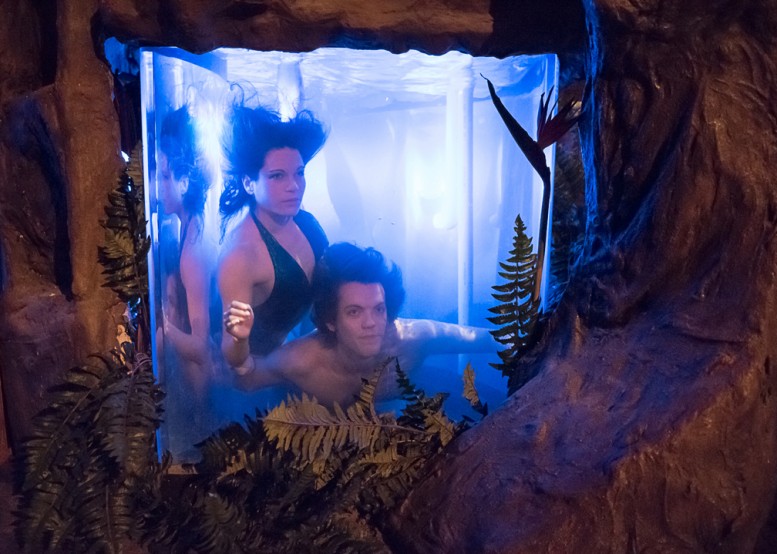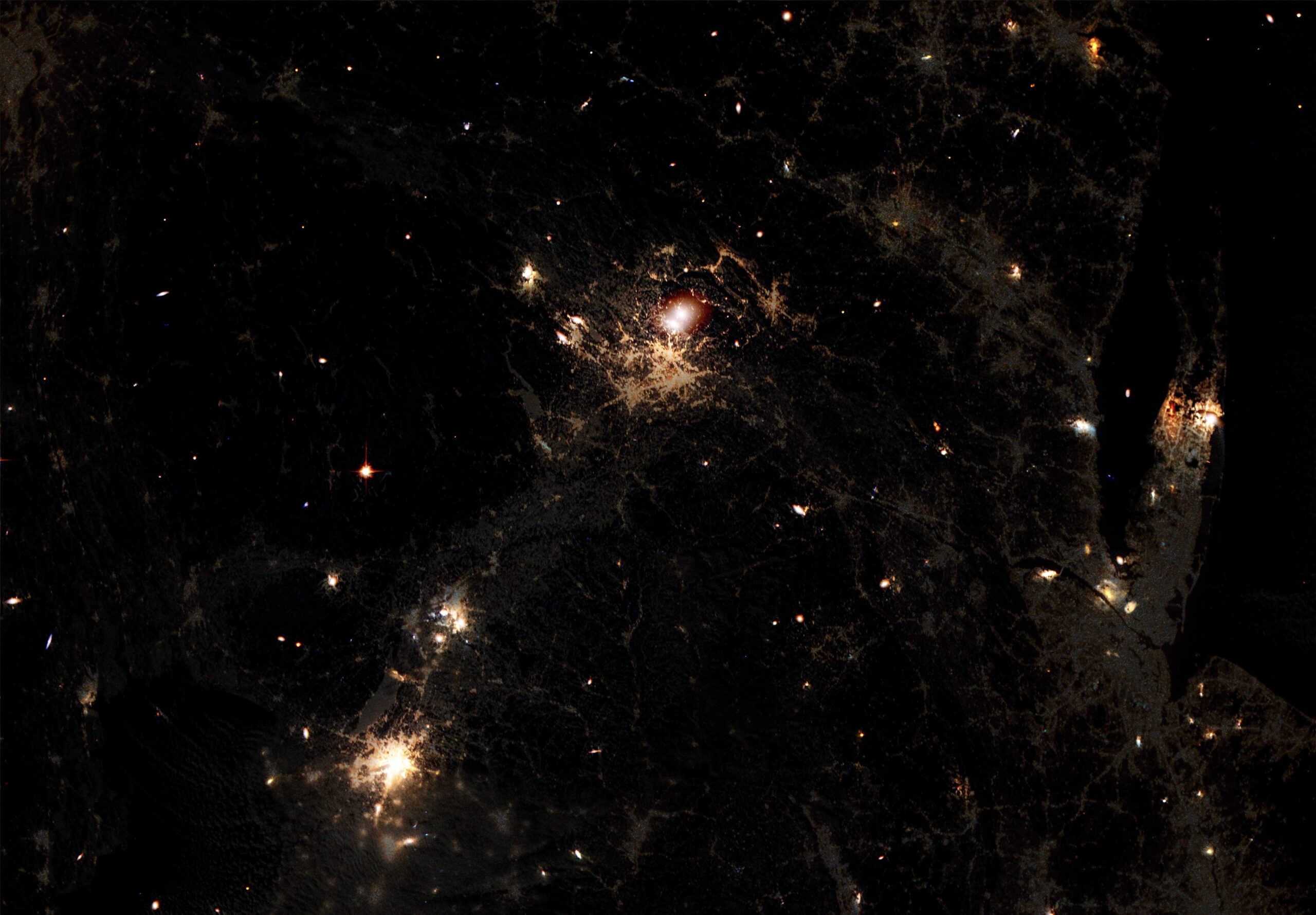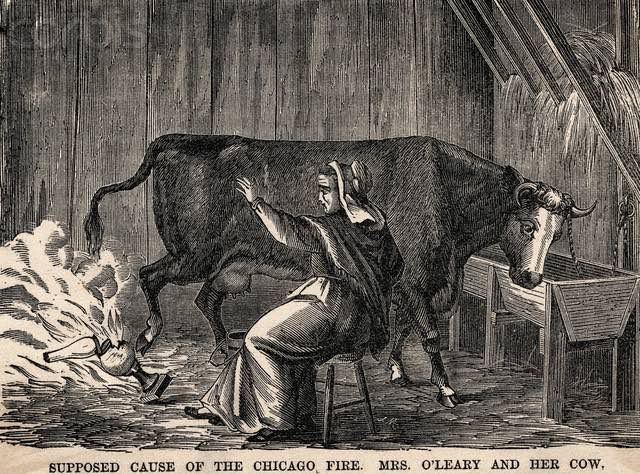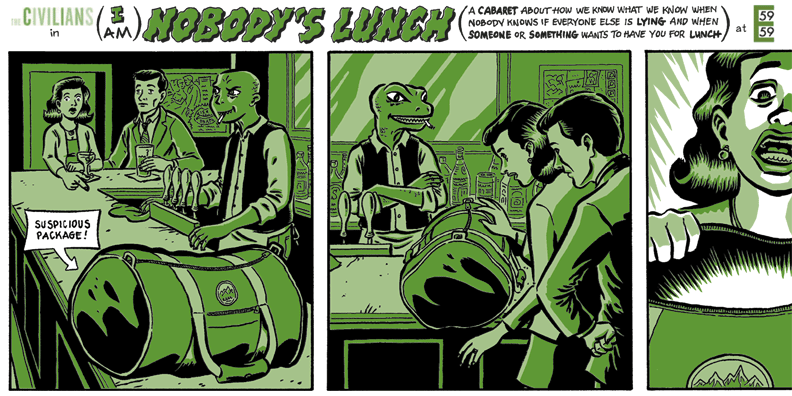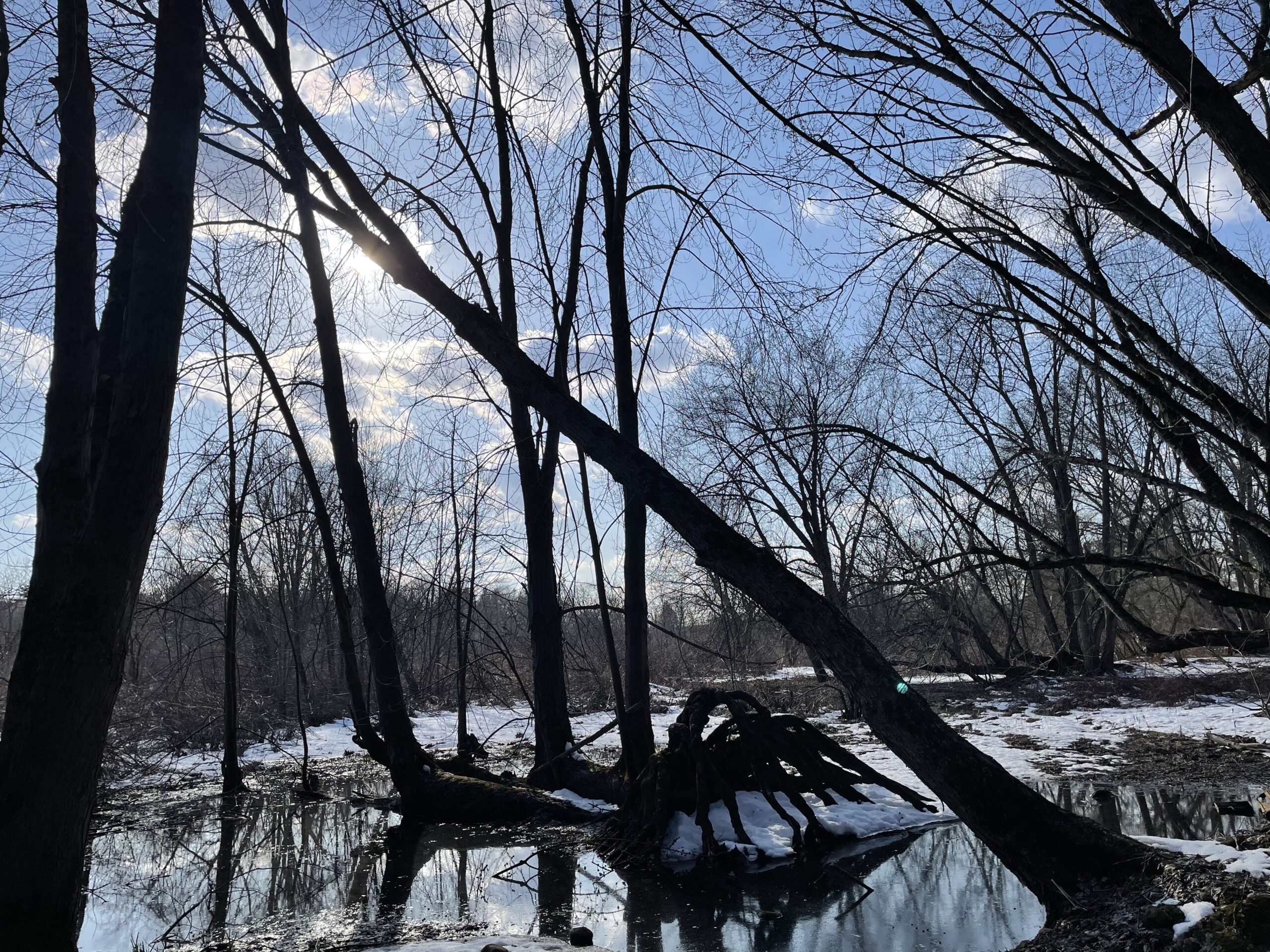Third Rail Projects started more than 15 years ago, creating traditional dance and dance/theater repertory shows at venues such as the Merce Cunningham Studio. Eventually, after one of its original founding artistic directors left the company to move to Italy, Zach Morris joined originators Jennine Willett and Tom Pearson. These three built one of the foremost site-specific, immersive and experiential dance/theater companies in the world.
Morris went to school for theater directing, Willett trained in dance and Pearson has a theater, dance and performance theory background. The synthesis between these artists spurred them to collaborate on performances different from any they made on their own.
“We found ourselves reinventing the way in which we made work,” said Morris. “And that really sort of became, I think, the hallmark the way that Third Rail and its directors have sort of approached art making.”
In 2005, they became interested in public, site-specific work and environmental installation. They asked questions about the audience, sought to attract audiences who might not typically attend theater and began viewing art as an offering.
Third Rail worked in this fashion because of the questions they had as art makers. Coincidentally, their points of artistic inquiry lined up with issues with which society was grappling. They noticed people craving connection. Audiences spend much time plugged into devices, and Third Rail identified one-on-one connection with another human as special.
Morris admits that, at first, they didn’t know they were making immersive work. It was only after someone called them immersive that they began using that label.
They prefer to call their work “experiential,” but immersive became mainstream with the Punch Drunk hit “Sleep No More.” Now, when Third Rail says they make immersive theater, people know what they’re talking about.
“I think it is an enormously useful term to, at least, center the conversation around the kind of the type of work people are talking about,” Morris said.
Morris also acknowledged that immersive is helpful as a broad umbrella term, but it doesn’t always succinctly talk about the work it’s used to describe.
“Punch Drunk’s work is immersive,” said Morris. “But so is Dog and Pony’s, and those two pieces couldn’t look more different.”
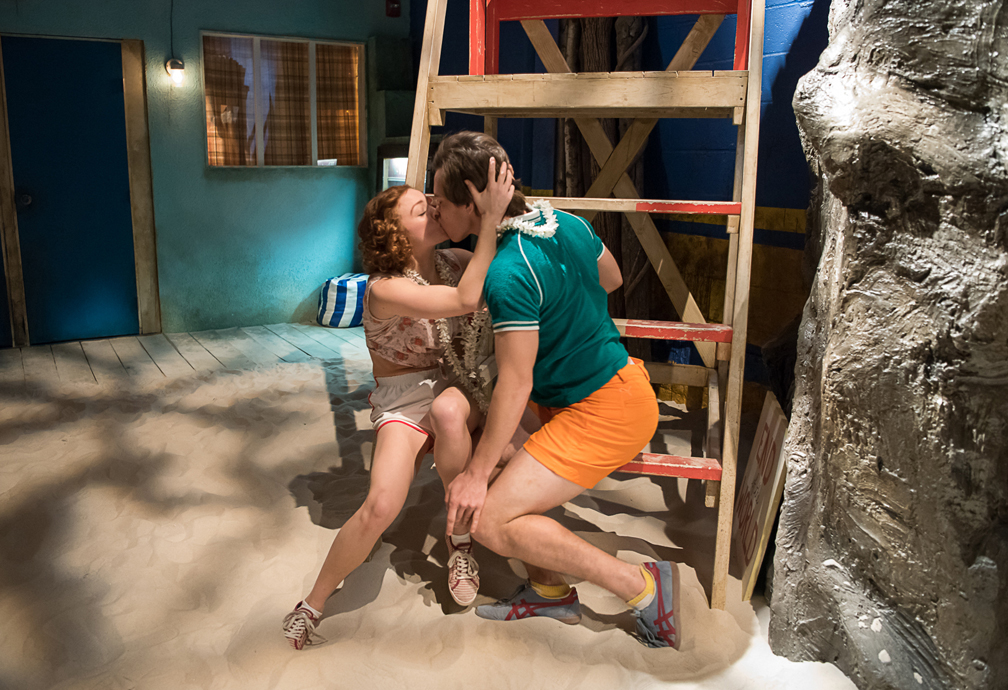
As is all their work, Third Rail’s current hit, The Grand Paradise, was developed and explored for several years before opening earlier this year in a repurposed warehouse in Bushwick, Brooklyn.
The original concepts for The Grand Paradise paralleled a piece Willett spearheaded called “Roadside Attraction.” This site-specific dance/theater piece — which followed a family in a vintage seventies pop-up camper — premiered in the River to River Festival 2013 and was commissioned by Arts Brookfield then toured throughout New York state.
Pearson wanted to create a place that had inhabitants with a destination. When “Roadside Attraction” moved to Governor’s Island for the summer of 2014, Third Rail began to add these elements of destination and birthed what eventually became “The Grand Paradise.”
After another full workshop in a house in Park Slope, Brooklyn in 2015, the company began a five-month build out of the warehouse in Bushwick.
Fundamentally, Third Rail starts with the experience they want to create, and then they look at their approach to what they call the “audience model,” or for how many people are they performing and how much or little the audience gets to see or experience.
“All of the work really is kind of a mirror,” said Morris. “If you do it right, there is enough space for the audience to find themselves in it, and to be able to read whatever they need or want to read into the work. And so it can truly speak to them in a really personal way.”
Performers played a big part in the development of “The Grand Paradise.” Jessy Smith, who portrays “Venus,” a 1950’s throwback showgirl, explained that performers went on “vision quests” to discover their characters. They wrote character papers that included their character’s inspirations, famous people to whom they relate and actions they might do during the show.
In the show, performers also constantly read the room and monitor the audience to make sure the show is working.
“The other day I had a woman,” explained Smith. “She started crying. And the whole room — not just me as a performer, but the whole room — you could really feel them supporting her. I thought that was really beautiful.”
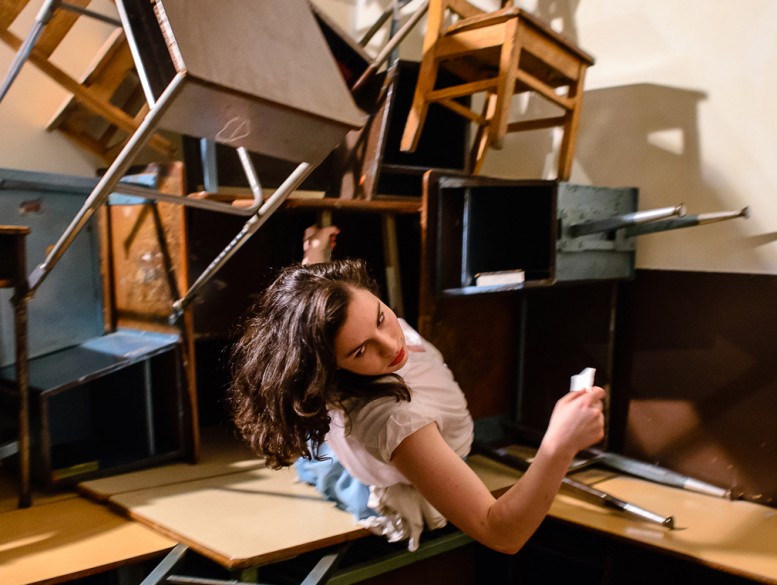
The company’s first big hit, “Then She Fell,” which is still running, stemmed from the type of experience they wanted to create for the audience. Because of the source material they were working with — the life and writings of Lewis Carroll and the biography of Alice Liddell — they wanted to create an “Alice-like” experience. It was episodic, shifting from between experiences. When they began the show in the former outpatient building at the Greenpoint Hospital, they chose to set it in a hospital. However, when the show moved to an old school, the script shifted again to reflect the space.
“That speaks a lot to the way we make work,” Morris said. “We’re really interested in listening to the spaces and the context in which we’re making work and using those spaces and context also as source material.”
From the beginning, Third Rail expressly intended for “The Grand Paradise” to be about place. They wanted to create a destination where guests could visit to fulfill longings. They wanted a fountain of youth offered to its guests, and they knew some of their performers wanted to be guests while others wanted to be denizens of the resort.
So they set out to create a different audience model than they had with “Then She Fell.” It would be a space that one might share with many audience members and then suddenly be alone. It offered a multiplicity of paths for the audience to follow and more agency and autonomy than “Then She Fell.”
Given its repeated successes, Third Rail is seen as a leader in the immersive theater world. This has led the company to start a new initiative called Global Performance Studio, or GPS. Lead by co-artistic director Tom Pearson, GPS is an international platform for connecting artists who are developing site-specific and immersive performance. Pearson recently led a month-long residency with artists in St. Petersburg, Russia, to create a piece called “As Time Goes By,” the first of many interceptions with international artists.

Co-artistic director Jennine Willett is helming “Learning Curve” with David Feiner, producing artistic director of Albany Park Theater Project (APTP). APTP is a youth theater comprised of mostly high school students who employ a kind of documentary theater in which they conduct interviews and share many of their own stories.
What started as a conversation with APTP grew into a performance reflecting two distinct but overlapping artistic points of inquiry. An early iteration began last year in short residencies, which they will premiere this summer. Education administrators have gone through the experience and have realized they may need to change how they work.
“It’s a stunning piece,” said Morris. “As an audience member, you find yourself quite literally walking in the shoes of someone who is in the Chicago high school system. What does it mean to take that standardized test? What does it mean to, you know, wonder if you’re going to graduate? What does it mean to navigate all these challenges these kids are navigating on a day to day basis?”
As for Morris, he’s returning to his hometown, developing “Sweet & Lucky” with the Denver Center for the Performing Arts’ program Off Center. After visiting “Then She Fell,” the Denver Center felt its audiences and artists were poised to engage with experiential work. Third Rail worked with the Colorado New Play Summit in Denver in February, developing with the local cast members. They head back in April to continue their collaboration, leading to a premiere on May 20.
It’s clear Third Rail Projects is just scratching the surface of what experiential dance/theater can achieve. They are eager to ask questions about how much or a how little they can say. They want to offer audiences part of a picture and let the audience fill in the rest.
“Our job is to, hopefully, create a bunch of really interesting dots,” Morris says. “But the audience’s job is to connect those dots. And they can connect them however they want. The thing that’s kind of cool about this type of theater is I’ll walk out of a show and you’ll walk out of a show, and we may have seen many of the same dots, but my picture will look very different from yours. And that’s sort of what’s amazing. And a very different way to think about storytelling.”
Author
-

James Carter is a writer and experience designer. He was a founding member of terraNOVA Collective and its associate artistic director for eight years. Recent transmedia plays include "FEEDER: A Love Story" (terraNOVA/HERE, NYC) and "NY_Hearts" (One Muse Presents & The Brick Game Play Festival). James also works as a social impact strategy and research consultant for Lina Srivastava, LLC. He has written for the Creators Project, Culturadar.com, ArtsFwd and Theatre Communications Group.


